The streets of Seoul provide endless inspiration for South Korea’s burgeoning fashion industry. Outside the season’s fashion shows — which took place in the capital last week — groups of attractive Korean twenty-somethings served as the finest poster children for the country’s current major export ambition: fashion. The street style circus at Hera Seoul Fashion Week isn’t the try-hard display of trophy sweaters and head-to-toe showpieces it often is in the West, but a parade of perfectly measured styling with few logos in sight. And inside the venues, over the six days of some 75 spring/summer 16 shows, South Korean fashion — much like its cool youth — didn’t cut corners.
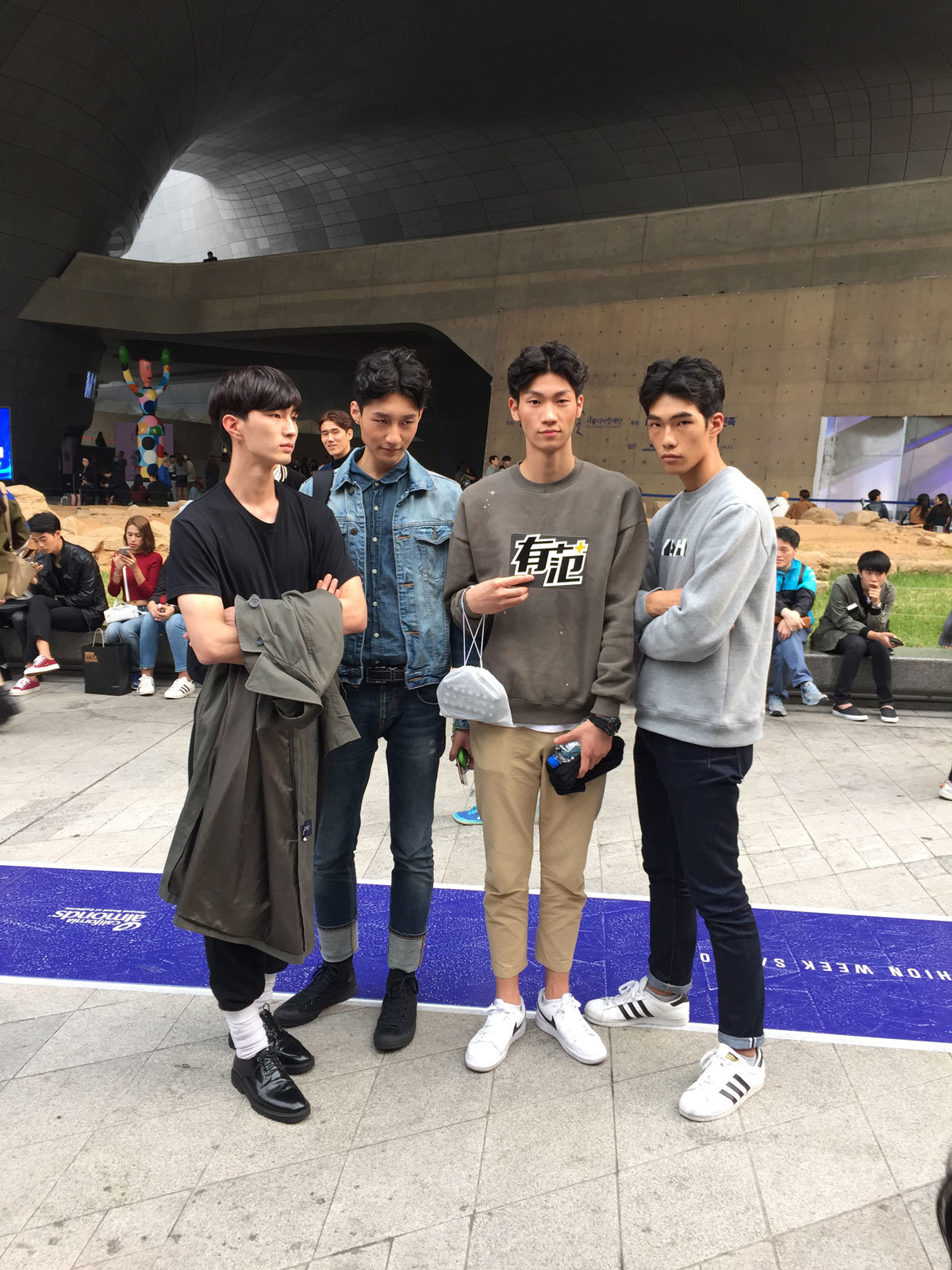
With its world-famous technology and colorful K-Pop, the country’s international profile is based on innovation and style. Those two components happen to be the cornerstones of fashion, so it’s no wonder the Koreans approach Seoul Fashion Week with a certain fearlessness. Sponsored by cosmetics giant Hera, there were shows from morning to evening, staged inside the spaceship-like Dongdaemun Design Plaza designed by Zaha Hadid. Everything ran like a well-oiled machine — there wasn’t a single delay all week. If you had to fault them anything on the production side of things, it’s only the length of the shows, which increases due to the necessity of featuring every garment from the collections because of the local fashion industry’s lack of showrooms (where buyers normally have access to more commercial stuff not shown on the runway).
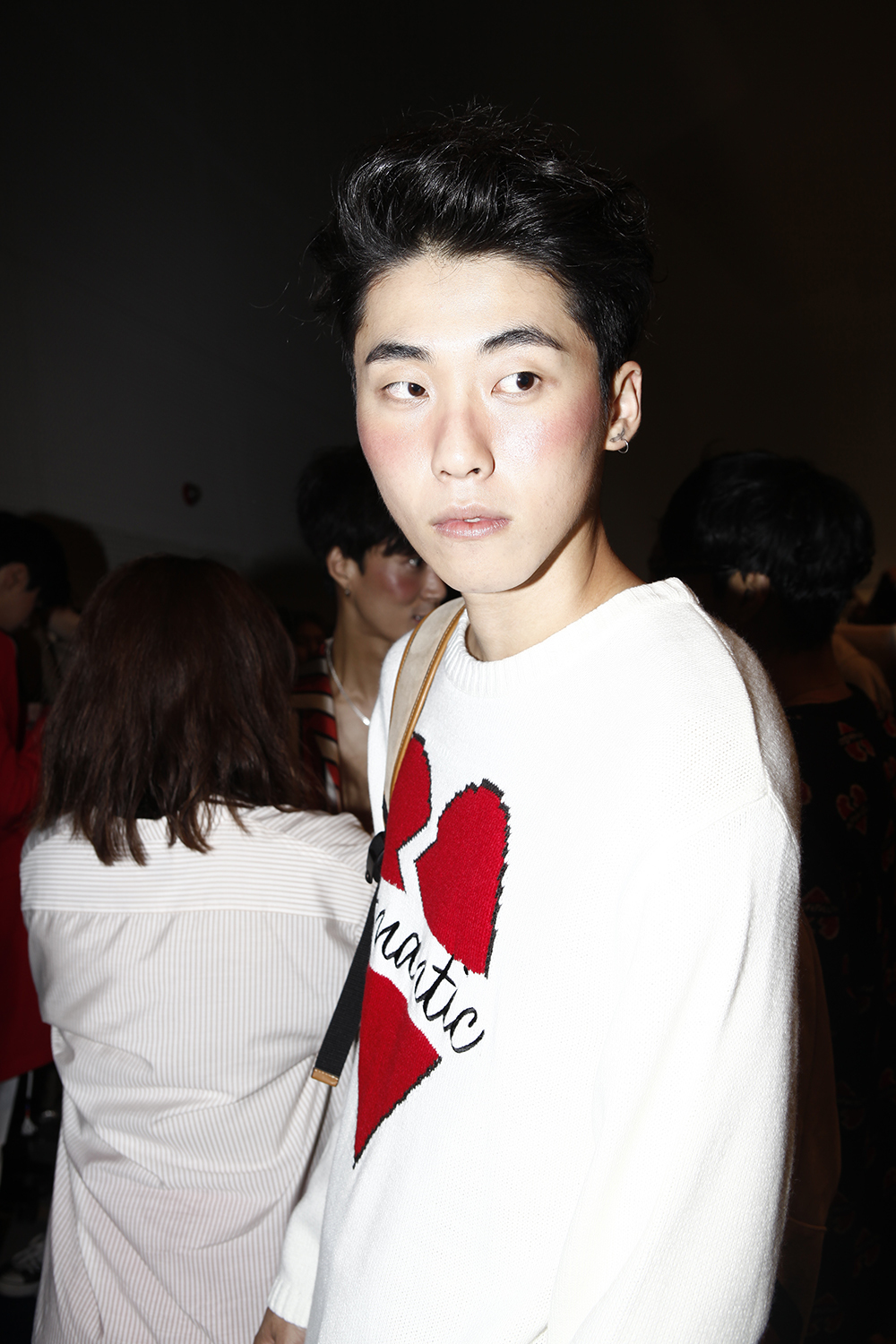
What of the fashion, then? Well, in a runway year centered on globalization everywhere from New York to Paris, the industry could benefit from looking to South Korea. Across their shows, references and aesthetics varied so much, you couldn’t have pinned down a cultural reference to sum them up. It’s the expression of an extremely internationally-focused nation. Take away Seoul’s Korean advertising banners and you could be anywhere in the world—L.A. comes to mind, specifically. And when the city’s designers go the urban route it easily leads to success, like Kye’s collaboration with hip delivery company Baeman, epitomized by graphic street signs in Korean and English (they may not be big on logos, but the Koreans love writing on clothes), or grungy R.Shemiste with its plaid-and-shirt hybrid coats, ripped denim, and oriental embroidery on baseball jackets.
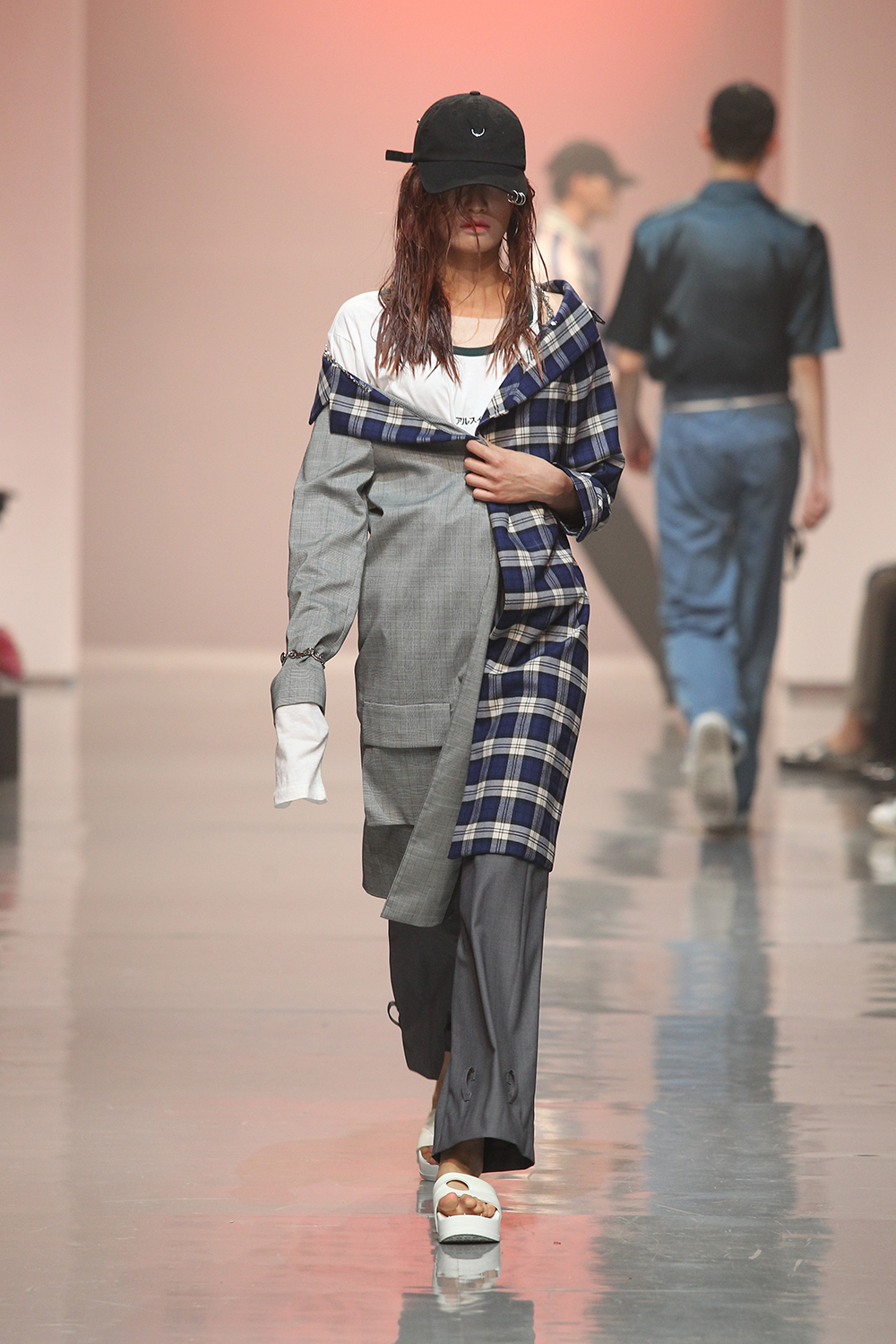
South Korea, of course, has its fashion street cred in order. Not only is accessory megabrand MCM based here, but in Paris designers such as Wooyoungmi, JUUN.J and Songzio have long flown the flag for the country’s fashion ability. In London, J. JS Lee is a fixture on the show schedule, while South Korea has now won the British Fashion Council’s International Designer Showcase twice, in 2013 when the Korean Culture Center won the award for best emerging fashion talent showcase, and in 2014 when Hyein Seo won the designer award. K-Pop fashion favorite Kathleen Kye shows in New York, but made two appearances on the Seoul runway last week, first in her Baeman collaboration and later in the week, in her own collection based on, well, hate.

It was one of several collections in Seoul that dealt with problems faced by young people in modern South Korean society and around the world. Soulpot Studio staged a theatrical message of peace and love where models handed each other (and the front row) white flowers, and Beyond Closet presented knits with broken heart motifs and the word ‘Nomantic’ knitted into them. Homosexuality is still widely considered nonexistent in Korean society, especially among older generations. Alongside the emergence of K-Pop, it’s an attitude which paradoxically enables young men to go to town with their fashion-forward looks, because the often-androgynous appearance favored by the street style segment, who hang out outside the fashion shows, isn’t necessarily associated with effeminacy or being gay.
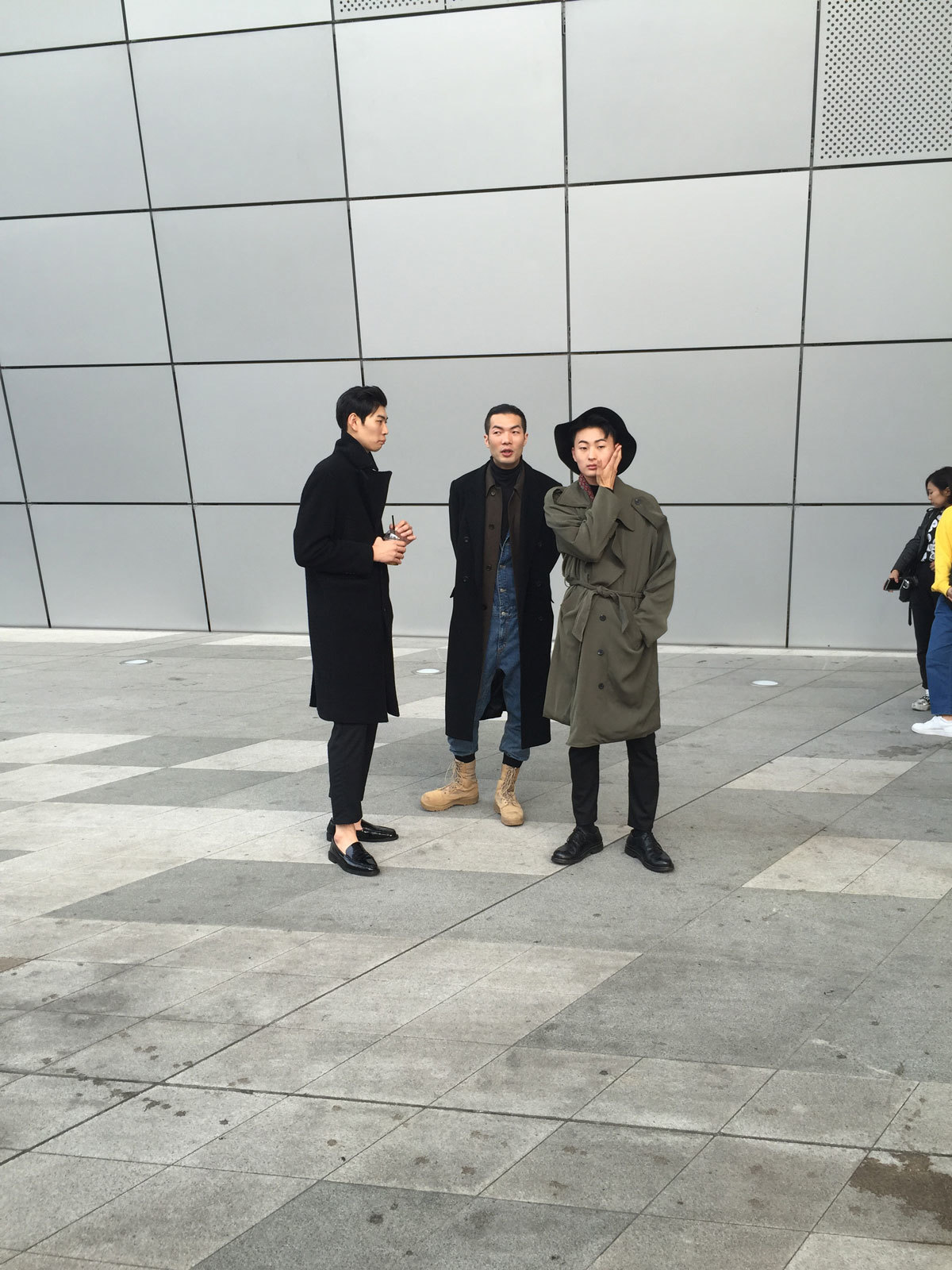
This hardly makes it easier to be gay, but in terms of pushing the codes of masculinity it’s an interesting scenario. The word ‘kkonminam’ is affectionately used to describe young men who basically look like girls. It means ‘flower boys,’ because their ivory-skinned (sometimes surgically enhanced) faces, long (sometimes false) lashes, and glossy (sometimes painted) lips make them look like pretty porcelain flowers. If you needed further definition, all you had to do was observe the K-Pop stars being frantically flashed by cameras on the front row at shows such as Ordinary People, which drew Sungjong of the boy band sensation Infinite, and Justin Bieber-esque hip-hopper Zion T. The collection flexed the co-ed muscle of Seoul Fashion Week where more than a few brands show women’s and menswear together.
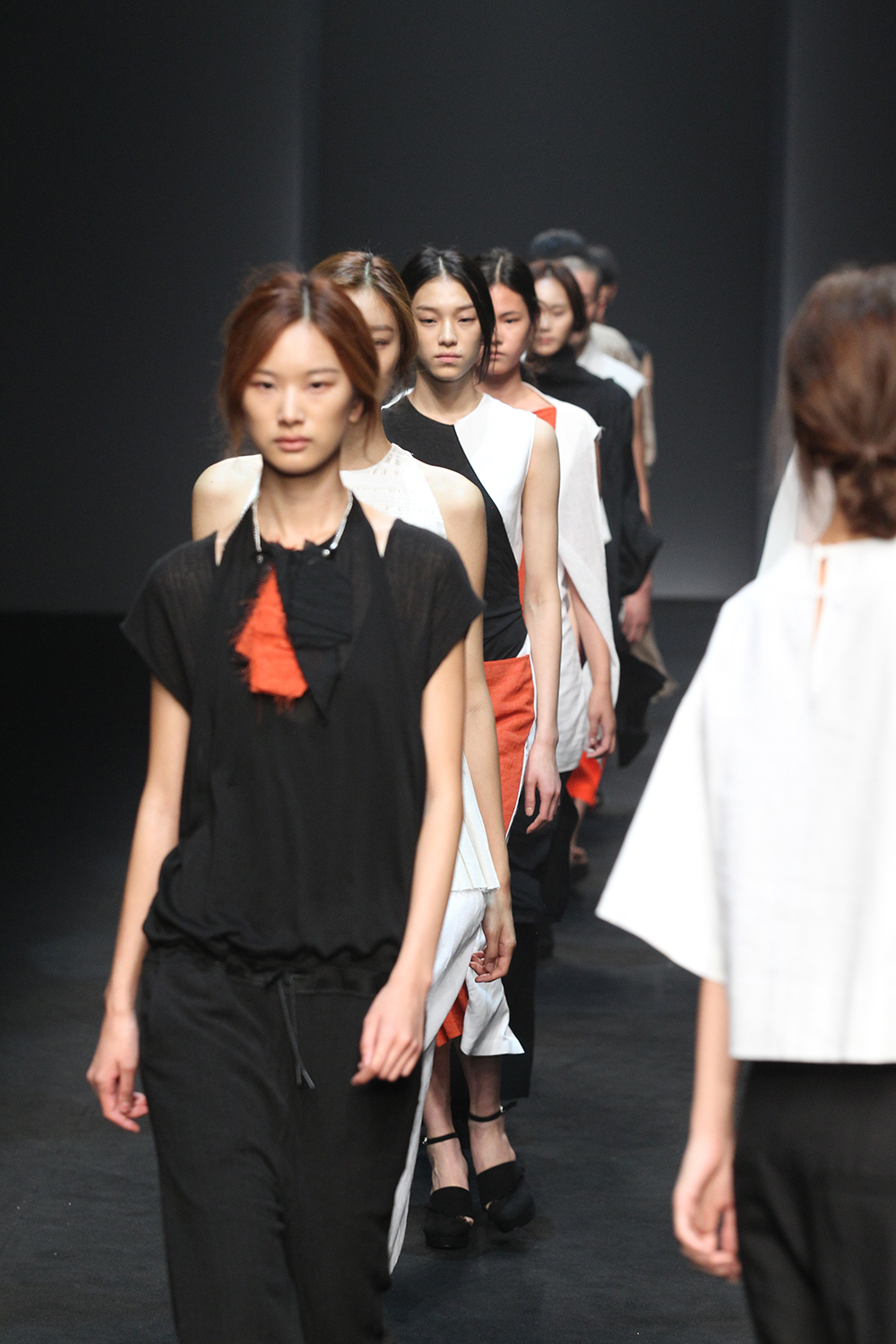
And much in the reflection of the situation outside the shows, the menswear stands out. The star designer of the week was without a doubt Blindness, a young label founded by friends Kyu-Yong Shin and Jong-Taek Lee in 2012 and based on the fusion of contemporary art and youth culture. The collection was most loudly defined by oversized sweatshirts with the words ‘Civil Liberty’ splashed across them – adding to the big statements of the week – but it was in its effortless but super luxe and cool simplicity that it made a home run: flawlessly tailored leather trousers and blue jeans that faded into white. Or those hooded shirts with huge starched, white cuffs, or that pristine plastic-y white coat and gilet.
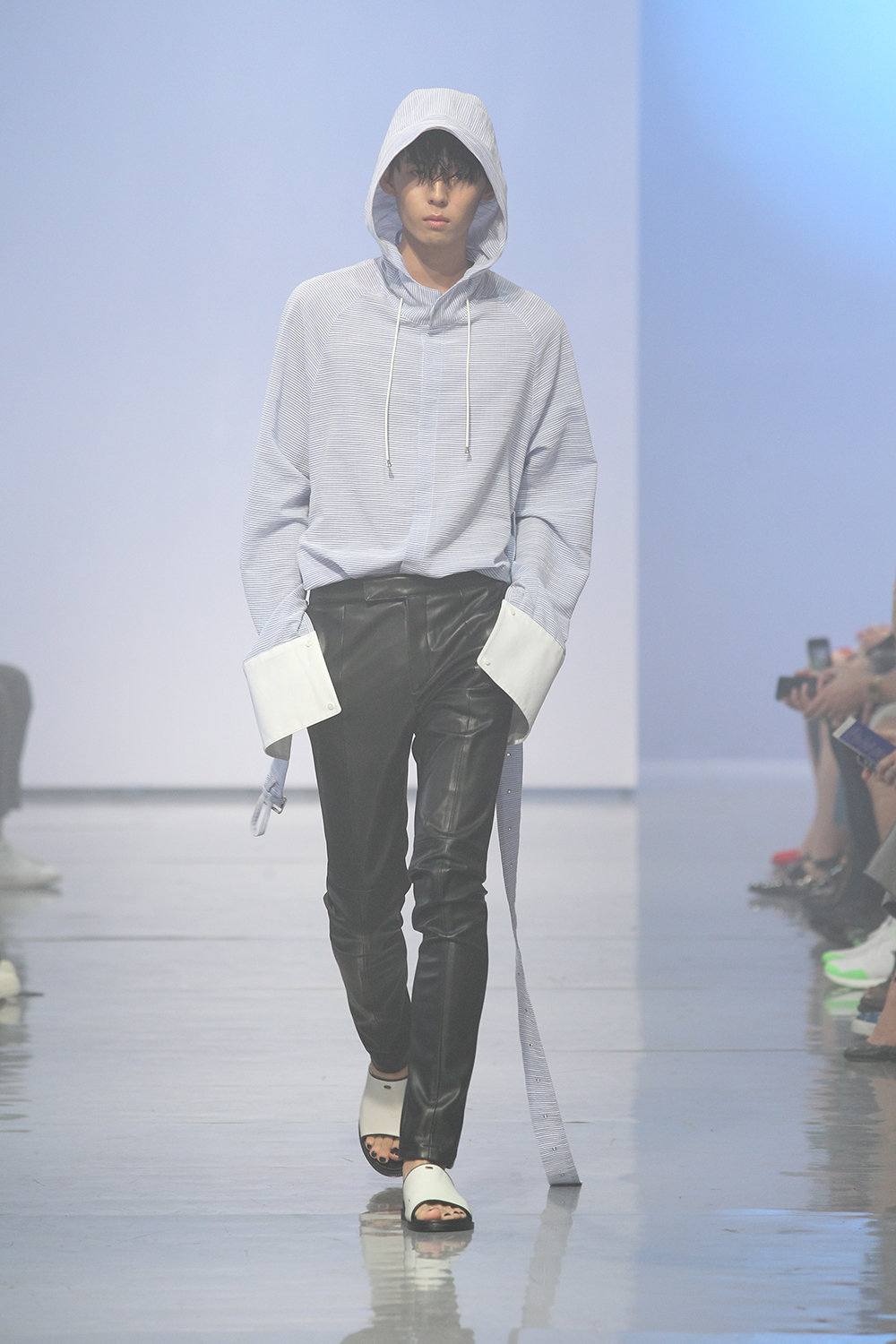
Styled on a cast of Seoul’s finest, led by a chiseled Jin Park, the Blindness show also served as a reminder of the terrific model export currently coming out of South Korea. From Hye Park, Lee Sung-kyung and Soo Joo on the women’s boards, to Lee Soo-hyuk, Park Hyung-seop and Sang Woo Kim on the men’s side, this country certainly pulls its weight in the international casting department.
For its biggest international push to date, Hera Seoul Fashion Week went beyond expectations, showing the industry that this faraway land of technology and K-Pop is ready to take their fashion conquest to another level—Gangnam style.
Credits
Text Anders Christian Madsen
